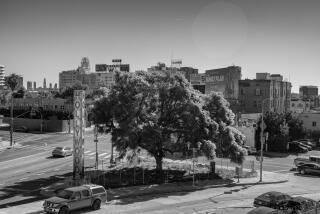Ginkgo bilobaMaidenhair treeLarge deciduous tree with...
Ginkgo biloba
Maidenhair tree
Large deciduous tree with distinctive leaves
It’s hard to remain unimpressed by a tree that has survived for more than 2 million years. Ginkgos are virtually unchanged in all that time, their leaves today almost exactly the same as those unearthed in fossils around the globe. Like most long-lived survivors, ginkgos have few if any enemies--they’re all extinct.
“Modern” ginkgos were discovered in China and didn’t reach the West until the first was planted at Kew Gardens near London in 1730.
Ginkgos will grow almost anywhere, sneering at city smog, steaming asphalt and auto emissions, all the while ignoring drought and looking great. As a stripling, ginkgo is lanky and impetuous, but a mature tree is about 70 feet tall with either a good spread or a straight, upright habit. Both kinds enjoy occasional eccentric branching, like a many-armed Indian goddess run amok.
Ginkgo leaves are fan-shaped and light green, like those of the maidenhair fern, which gave the tree its common name. They turn bright yellow in the fall and drop all at once, or near enough, making a lovely golden carpet.
It seems that no writer can mention ginkgo without citing the dreaded female fruit--and who am I to break with tradition?
Small male flowers and fleshy female fruits are borne on separate trees, and we are exhorted to plant only male trees because they don’t have the “smelly, slimy” fruit. Many readers took this to heart, and consequently very few of us have ever known a female ginkgo.
When shopping for a tree, look for ginkgos that have tags stating their gender--or a nursery owner who’s prepared to swear, hand over heart, that’s it’s a boy. There is a grafted male strain with darker green leaves that turn a rich golden yellow in the fall. Called “Autumn Gold,” it has an upright growth habit to about 50 feet at maturity.
Fall and winter are the best seasons for transplanting ginkgos. Although very tough, they will need some staking and watering until they take hold. And while they grow slowly, they will also grow steadily, eventually overwhelming a small space.
But if one has the room, one can plant a piece of prehistory.
More to Read
Sign up for Essential California
The most important California stories and recommendations in your inbox every morning.
You may occasionally receive promotional content from the Los Angeles Times.









